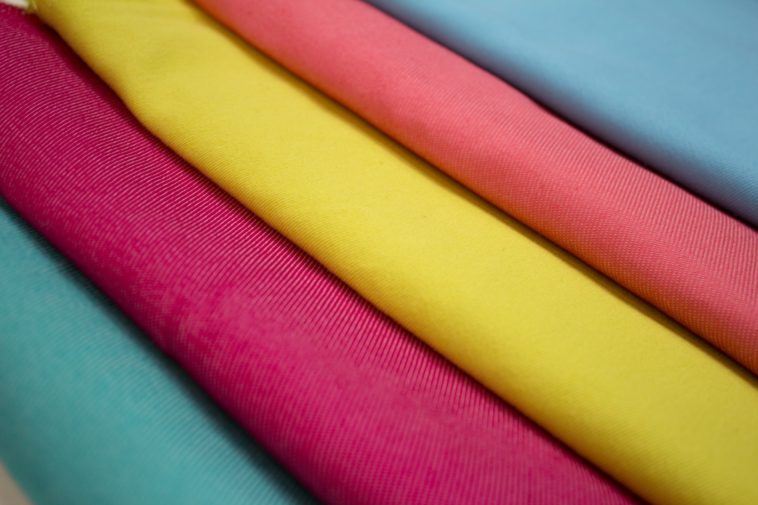A textile is a flexible fabric that can be woven, knitted, crocheted, or made of many other materials. A textile can consist of natural fibre such as wool or artificial fibres like polyester. Textiles are formed by weaving, knitting, crocheting, knotting, and even putting pressure on the fibre to form cloth.
Textiles are made of many different types of fibres. Textiles can be natural, man-made, or a combination of both.
The first textile was probably animal skins and human hair. The exact date that humans started to wear clothes is unknown, but archaeologists have found the remains of cloth from about 30,000 BC on a mummy in Eastern Europe. It seems certain that at some point, people began weaving silk which came from worms (silkworms). Textiles made from silk were very popular since it was: soft and strong; shiny and beautiful; could easily be dyed into various colours; did not show dirt and so didn’t need washing often; retained warmth when wet; dried quickly after getting wet.; Textiles such as silk and wool were very popular in Europe during the Middle Ages. Textiles also became a source of wealth due to their high value, and many wars were fought over who would control the trade routes for these textiles.
There are three general stages in textile production: Textile manufacturing, Textile finishing, Textile engineering.
Textile Manufacturing

During this stage, the materials required for the manufacturing process are prepared, such as twisting yarns or opening cotton fibres that have been processed into long threads. Textiles are made from natural fibres (such as wool, silk, or cotton), man-made polymers (nylon, acrylic, or modacrylic), and blends of both (cotton-polyester blend). Some synthetic fibre is as strong as natural fibres. Textile manufacturing begins with carding. Textile fibers are cleaned, combed, and processed in order to align the fibres parallel to each other for ease of spinning into yarn. Textiles may be bleached; dyed (including dyeing of whites); printed, or coated with a protective finish material such as size to improve its resistance to moisture and soiling. Textile engineering includes all aspects of converting raw fibre materials into finished textiles either by knitting or weaving. During weaving, it is possible to produce very fine cloth from high-quality fibres like wool, cashmere, and silk. In contrast, other fabrics such as sari cloth have been handwoven since ancient times using very simple equipment.





